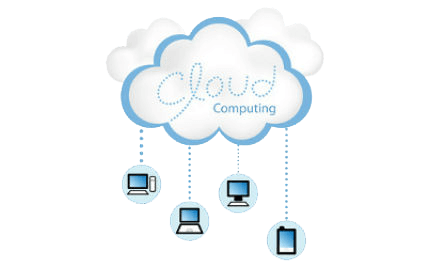What is Cloud Computing?
Don’t let traditional IT constrain you, utilize Cloud Services
Cloud computing is simple to understand than you think. It’s managing shared applications, your development platforms or any computing infrastructure via the web. An example of this is using an email client in the web like Gmail instead of a mail client like Thunderbird on your computer. This provides better options for your company such as more bandwidth and more computing power as opposed to the traditional services.
Cloud computing is defined as a technology model enabling complete, convenient, on-demand network access to a pool of configurable computing resources. These resources can be rapidly employed and released with minimal management effort or service provider interaction. The National Institute of Standards and Technology (NIST) lists five essential characteristics, which we have paraphrased in our own words:
- On-Demand Self Service – The user has the ability to provision computing capabilities without having to directly interact with the service provider.
- Broad Network Access – The ability to access the programs over the internet via various platforms including mobile phones, tablets, laptops, and desktops
- Resource Pooling – The provider of the service can serve multiple customers at once and has various physical and virtual resources to expand computing resources as needed based on user demand. The customer may not know exactly where the location of the service or company is but may be able to find out where the information is stored.
- Measured Service – The cloud systems have a certain level of control over the use of the service. This usually depends on the storage, bandwidth or number of active users on the account. The usage can be monitored, controlled or reported so that it stays transparent between the user and the service provider.
- Rapid Elasticity – The service has the ability to scale rapidly outward and inward based on customer demand. To the consumer of the service, there appears to be no limitation and they can use the service in any quantity at any time.
Cloud computing is utilized four different ways over three service models. The three service models are:
- Software as a Service (SaaS) – The consumer’s ability to make use of the provider’s services and applications on a cloud infrastructure, or the internet. These apps are available on various devices through a client interface, like the web, or a program. In this scenario, the consumer does not manage or control any of the cloud infrastructures. It is maintained by the service provider.
- Infrastructure as a Service (IaaS) – The ability for the consumer to use a service provider’s computing resources to deploy or run software, which can include operating systems and apps. The consumer doesn’t manage the underlying infrastructure but controls the operating systems, storage, and deployed applications, along with possible control of select networking components (e.g., host firewalls).
- Platform as a Service (PaaS) – The ability to deploy to the cloud consumer-created or acquired apps using programming languages, libraries, services and tools supported by the provider. The consumer does not maintain the underlying infrastructure but has control over the deployed apps and the ability to configure the application-hosting environment.
The four deployment models are:
- Public Cloud – This type of infrastructure is available to the general public. It can be owned, managed, and operated by businesses, academic organizations, or government entities, and it exists either on the physical or digital resources of the cloud provider.
- Private Cloud – This cloud infrastructure is segmented for exclusive use by a single organization comprised of multiple consumers (e.g., business units). It can be owned, managed, and operated by the organization, a third party, or some combination of the two, and can be on or off site.
- Community Cloud – This model is set to be used only be a specific community. Comprised of consumers from multiple organizations that have shared concerns (e.g., security requirements, policy, and compliance considerations).
- Hybrid Cloud – This cloud model is exclusively used by a single organization comprised of multiple business units. It may be owned, managed, and operated by the organization, a third party or a combination, and it may exist on or off site.
Hopefully this gives you a better understanding of the cloud computing world. If you are looking to migrate your business to the cloud we are more than happy to help, contact us or call us at 623-312-2440 for a free quote.
[/et_pb_text][/et_pb_column][/et_pb_row][/et_pb_section]